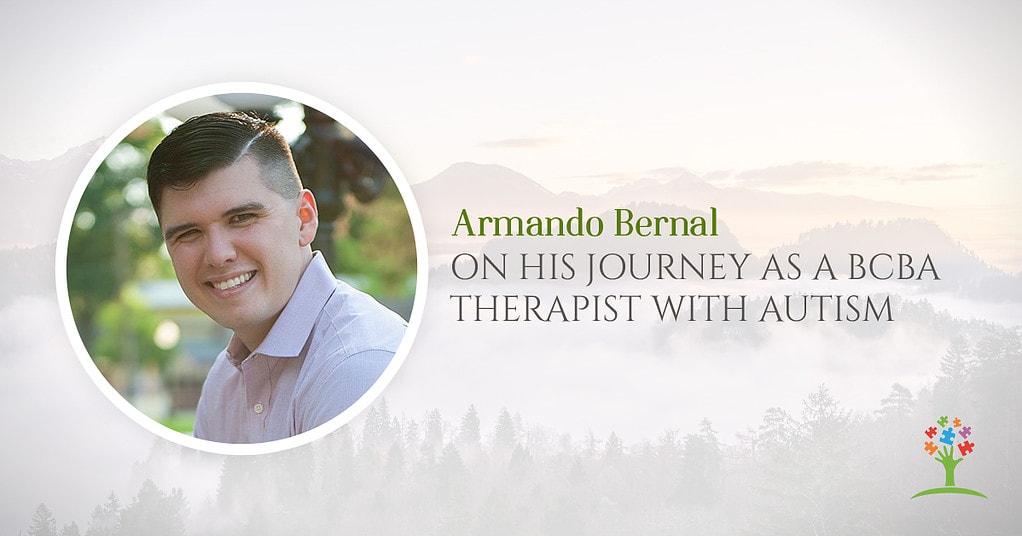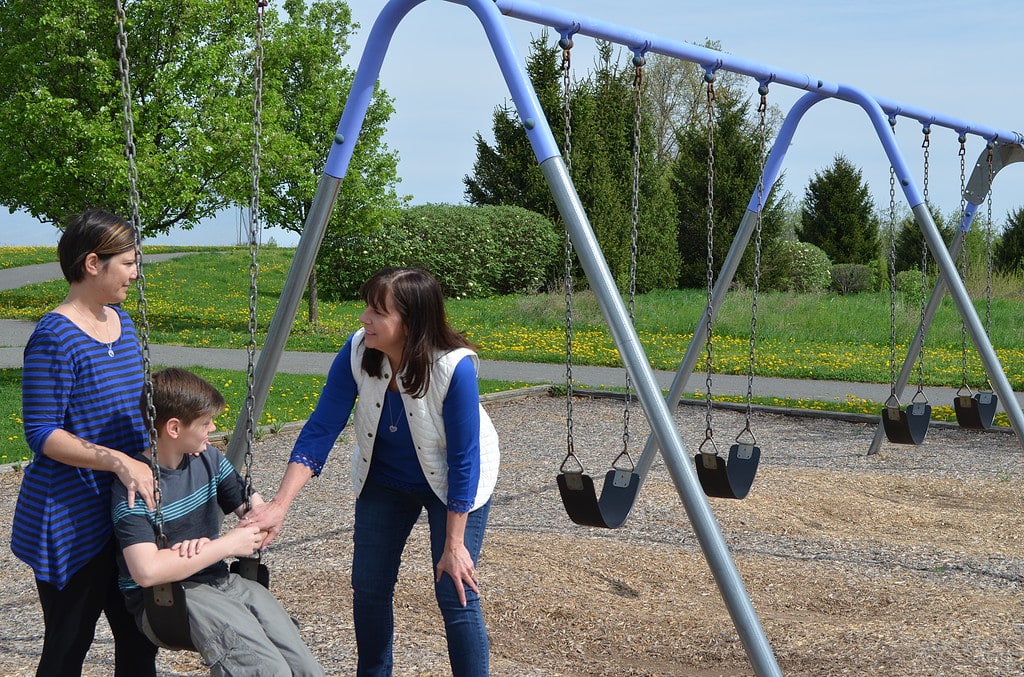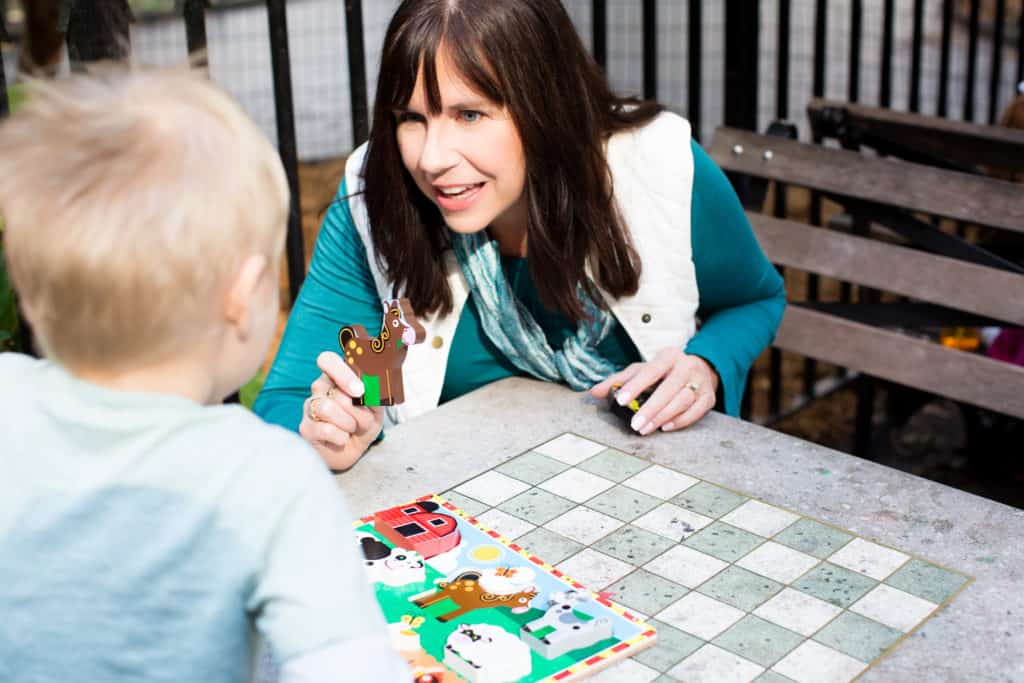Armando Bernal was diagnosed with autism at the age of three. Though he never received ABA himself as a child, through the support from his family and from his schools, Armando was able to learn to communicate effectively and acquired social skills that allowed him to make friends and graduate from high school. He then started doing mentoring programs in college for children with autism.
Armando became a special education teacher and realized that there was a lot to it. He was seeing a lot of aggression and other behaviors that he didn’t feel well-prepared to handle. He knew there had to be something more.
That was when he started researching and found ABA, or Applied Behavior Analysis, and from there went on to get a master’s degree and became a BCBA two years ago.
What he says he loves the most about ABA is how simplistic it is. For instance, there are four reasons – or functions – for why a person will do something. These functions are helpful in determining why a person will exhibit a wanted or unwanted behavior. And certain behaviors can come from more than one function at once.

The Four Functions of Behavior
I’ve discussed the 4 functions on my blog as well and noted that really only 3 of these functions are discussed often. The first function is socially mediated positive reinforcement. Say a child wants attention and bites his hand. Because biting has led to attention in the past, the biting behavior is likely to occur again or increase in the future. The second function is socially mediated negative reinforcement – when a child bites his hand because he wants to get out of something (escape). The third is automatic positive reinforcement – a child bites his hand because it feels good (sensory).
The “forgotten” 4th function, which in technical terms is called automatic negative reinforcement, relates to pain or discomfort. A child could have a severe headache and bite his hand to try to relieve the head pain. So the same behavior (hand biting) can occur due to four different functions.
When a child with autism has limited language, knowledge of the 4 functions can help us teach children to better communicate their wants and needs without problem behaviors.

Accepting His Autism Diagnosis
Armando describes himself as a very black and white thinking person, so having these functions laid out so clearly is helpful to him.
When I asked him about how he likes being a BCBA he said, “I feel like myself. Not just in a personal sense as I am now, but also in a professional sense that I can be happy with who I am there. But I also am happy with how I handle my job now.”
Armando used to feel a little ashamed of autism, but then he made a shift and started disclosing it to people. “I wish I could go back and say, Hey, I had autism. But in the 1990s and early 2000s, that wasn’t the case. That wasn’t something that you really wanted to disclose unless you wanted to be looked upon differently.”
It wasn’t until after he graduated college that he realized he needed to be more accepting of his autism and who he was. By listening to the parents of the children he was teaching in special education, he started to understand that his own experiences better helped him serve the kids. And that’s still true to this day.
Disclosing His Autism Diagnosis
More often than not, Armando doesn’t tell parents that he has autism. Because he says that they aren’t interested in his story, but their children’s. “When they come to me in the clinic or when they come to me in a special education setting, [they] swallow a lot of pride to say… I need help. I feel like that’s so hard for parents to accept.” By focusing on their child’s story and their wants and needs, Armando can better show the parents that these kids can do so many great things – along with the parents.
But there are times that a parent has met with Armando and said “my child has autism. I think his life is over.” In those cases Armando will disclose his own diagnosis as a way to show the parents that their child, too, can do hard things. And he will support them in any way that he can. He says that usually gives parents a sense of hope.
He also finds disclosing his diagnosis helpful when parents have preconceived notions about ABA controversy. Some parents don’t want to do ABA because they’ve heard so many horror stories. But Armando can show parents that ABA actually can help children progress and grow.

Is ABA Therapy Abusive?
ABA is the most evidence based treatment for children with autism. But there are groups of very passionate people who do not support ABA and warn others against using it. There are quite a few reasons for this controversy, some behind that unfortunately, individuals have received bad ABA treatment that was not focused on them individually and caused more harm than good. There are also adults with autism who believe autism is a gift and don’t believe that autism is something that needs to be treated.
Some BCBAs also have ethical concerns about ABA and want to see the field advance and update as we learn more about autism.
As a parent of a child with autism, I understand the concerns parents have over wanting the best care for their child, and with so much controversy around ABA it can be hard to jump into it.
But “good ABA” is child-friendly and positive and focuses on helping people with autism have the best quality of life.
ABA focuses on helping children better communicate and learn basic self help skills so that they can lead their happiest and safest lives. It’s about trying to find the best ways to help children with autism communicate effectively (verbally or nonverbally), go to the bathroom on their own, feed and clothe themselves, and have other forms of basic independence. The right program will provide help to both children and their families.
Armando is kind of caught in the middle of the ABA controversy firestorm. But he says that he likes that he gets to play both sides, that he can be a bridge between the confusion and show that he’s seen real progress.
ABA is why he is able to do what he does. “It’s for the parents that come to me and say, my child hasn’t eaten anything but chips and snack foods for seven years, or my child has never said, I love you or gone to the bathroom by themselves. And to see the success and the growth in that child, after ABA, for them to be able to eat all kinds of foods or be able to go to the bathroom and take care of independent skills like that is why I do what I do.”

Finding the Right Provider
Another good podcast episode is on how to spot good ABA. I interviewed Tameika Meadows on the podcast from I Love ABA. Tameika Meadows is another BCBA from Atlanta, Georgia who says the key is to focus on finding the right provider. You need to know the goal behind the therapy – what is it you’re hoping to gain from bringing your child to a certain therapist? Each child with autism has specific needs and barriers, so those individual goals should be met in each session.
Another thing to look for is how much parent involvement is allowed. Dr. Meadows says that there should never be any surprises when it comes to your child’s therapy. You should be able to see the facility, know the strategy, goals, and reinforcement given during a session, and have major input on how your child is being treated.
When parents come to Armando and say they can’t do ABA, he’s very transparent about how he is going to help them. He knows that there is bad ABA out there, so he wants parents to be involved with their child’s therapy. They can see what he’s doing at the clinic at any time. It’s a partnership.
Having no therapy at all is better than having bad therapy, so researching the providers in your area is a step you cannot skip when putting interventions in place for your child with autism.







